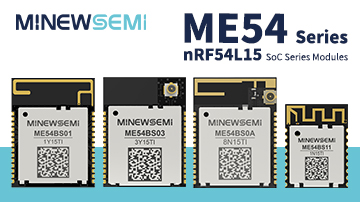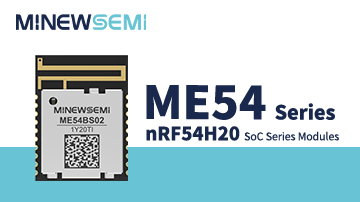LoRa, short for "Long Range," is a wireless technology widely used in IoT applications due to its ability to transmit data over long distances with minimal power consumption. As the IoT ecosystem grows, LoRa modules play an increasingly important role in enabling efficient communication for various devices.
In this article, we’ll explore the key advantages and disadvantages of LoRa modules to help you decide whether this technology suits your application.

LoRa modules are known for their unique features that make them stand out in IoT applications. Below are some of their most notable advantages:
· LoRa modules are highly sensitive, with sensitivity levels reaching as low as -148 dBm and a link budget up to 175 dB.
· Under ideal conditions, LoRa networks can achieve transmission ranges of up to 15 kilometers.
· With low power consumption during idle mode (200 nA) and active signal reception (10 mA), LoRa modules offer a typical battery life of 5 years, making them ideal for long-term applications.
· LoRa modules are optimized for ultra-low power usage, a critical feature for IoT applications where devices often rely on battery power.
· LoRa technology supports parallel and asynchronous multi-channel data processing, increasing the system’s overall data capacity.
· A single LoRa gateway can handle communication with multiple nodes across wide areas, reducing the number of gateways required and lowering deployment costs.
· LoRa uses signal air transmission time to calculate distances and positions with accuracy up to 5 meters under ideal conditions.
· This makes LoRa a cost-effective option for applications requiring basic location tracking.
· LoRa’s modulation allows data transmission even when the average power is below background noise, making it highly secure and resistant to unauthorized decoding.
· LoRa operates in unlicensed frequency bands, reducing the need for regulatory approvals.
· Modules are cost-effective, standardized, and easy to deploy, enabling quick and simple network setups.
· LoRa modules use advanced spread spectrum modulation and forward error correction technology, ensuring reliable data transmission even in noisy environments.
· Compared to traditional modulation techniques like GFSK and FSK, LoRa’s spread spectrum modulation improves sensitivity by 8-10 dBm, enabling stronger performance over longer distances.
Despite their many benefits, LoRa modules also have limitations that may affect certain use cases.
· LoRa’s long-range capabilities come at the cost of slower data transfer rates, making it unsuitable for applications requiring real-time or high-speed communication.
· LoRa’s payload size is limited, with a maximum data capacity of only 1 byte per transmission, restricting its use for applications requiring large data transfers.
· Due to high latency and boundary jitter, LoRa modules are not ideal for time-sensitive tasks, such as video streaming or real-time monitoring.
· LoRa modules are generally more expensive than GFSK or FSK RF modules. However, their superior performance justifies the higher price for many IoT projects.
· As LoRa adoption grows, the risk of spectrum interference increases, especially in densely populated IoT networks.
· Deploying LoRa requires building a new network infrastructure, which can add complexity and cost to projects.
· LoRa’s duty cycle limitations reduce network bandwidth, making it better suited for periodic and short-term communications rather than continuous data streaming.
LoRa modules have revolutionized IoT communication by offering long-range, low-power solutions for various applications. While they excel in range, power efficiency, and scalability, they also have limitations, such as low data transfer rates and limited payload sizes.
If your project requires a cost-effective, low-power solution for transmitting small amounts of data over long distances, LoRa is an excellent choice. However, for real-time or high-speed applications, alternative technologies may be more suitable.
At MinewSemi, we specialize in developing LoRa modules tailored to your IoT needs. With extensive experience in IoT development and a proven track record, our team can help you design and implement custom LoRa solutions.
Contact us: minewsemi@minew.com
Lear more: https://en.minewsemi.com/wireless-modules/lora-module
Choose MinewSemi for reliable, high-performance LoRa modules that bring your IoT projects to life!


Hot tag
Recommended articles